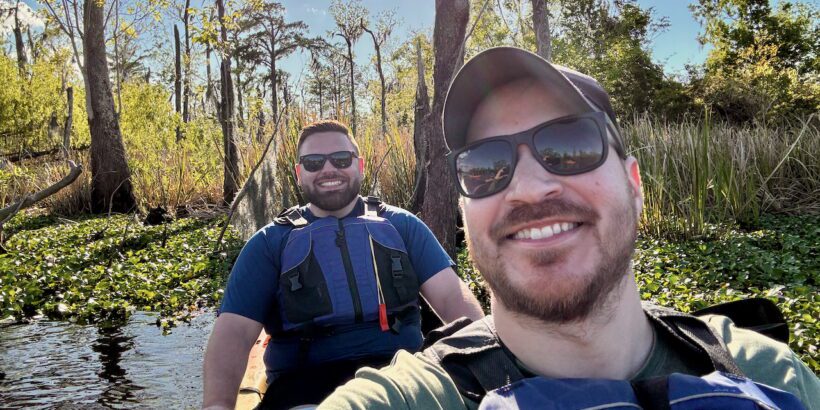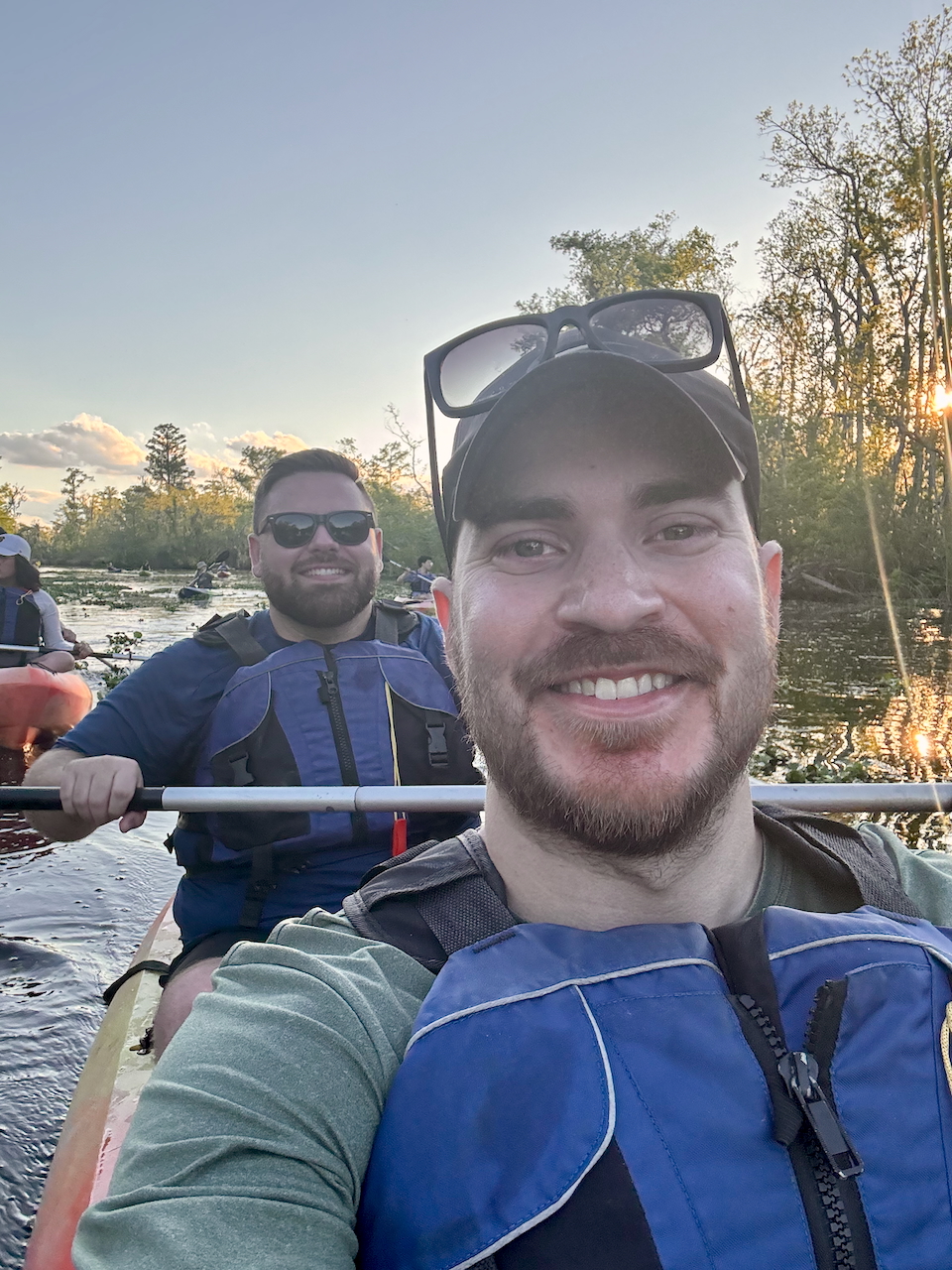They say the Manchac Swamp is cursed—haunted by the ghost of a voodoo priestess who once prophesied doom for an entire town. Legend has it that Julia Brown, a healer and spiritual figure from the early 1900s, used to sing, “One day I’m gonna die, and I’m gonna take all of you with me.”
When she passed in 1915, a massive category 4 hurricane hit during her funeral, wiping out three towns and hundreds of lives. Many of those lost were swept away into the swamp. People around here still believe her spirit roams the swamp, and if you’re quiet enough while paddling through the bayou, you might just feel her presence.
Whether you believe the stories or not, there’s no denying that Manchac Swamp has an energy all its own. It’s not just the ghost tales—it’s the alien beauty of the terrain.
Towering cypress trees dripping in Spanish moss, mirrored water so still it looks like glass, and tangled vines creating natural archways that seem pulled straight from a dark fairytale. It’s a place where land and water blur, and everything feels both ancient and alive.
The Manchac Swamp Wildlife Kayak Tour
We booked a late afternoon kayak tour with New Orleans Kayak Swamp Tours from 4:30 to 7:00 p.m., and the timing couldn’t have been better. The tour launches from a spot tucked right off the highway—a blink-and-you’ll-miss-it location that’s sometimes marked by a trailer of colorful kayaks or just the boats already in the water.
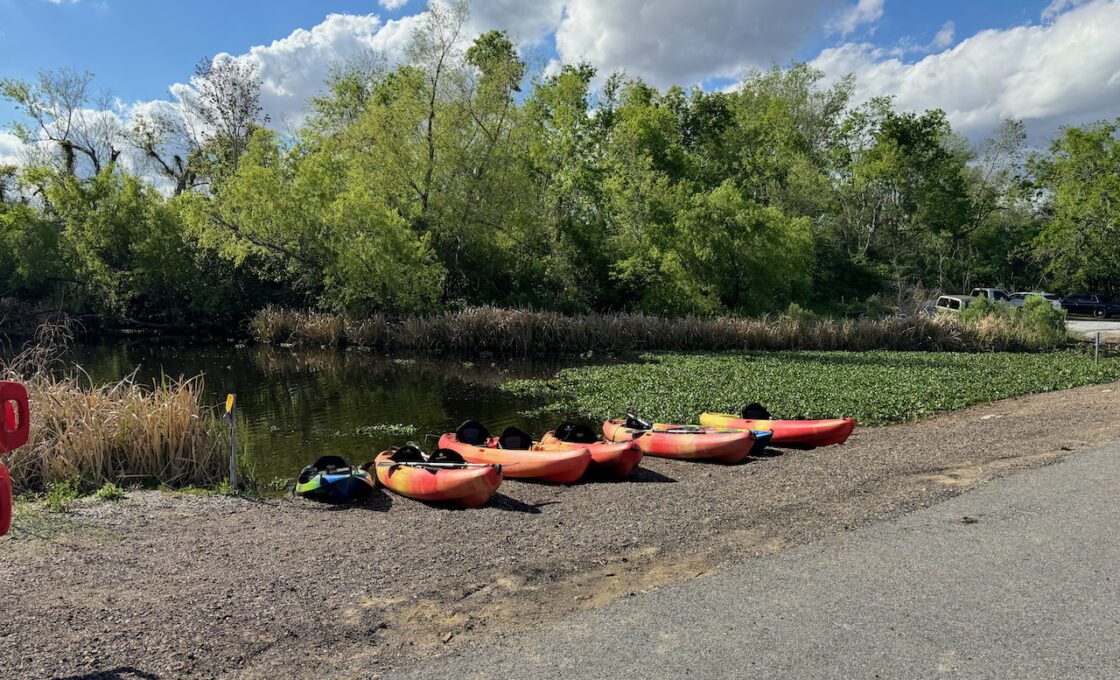
After a quick intro and some safety instructions, we got into our kayaks—some single, some double—and paddled under a nearby bridge, entering the heart of the swamp.
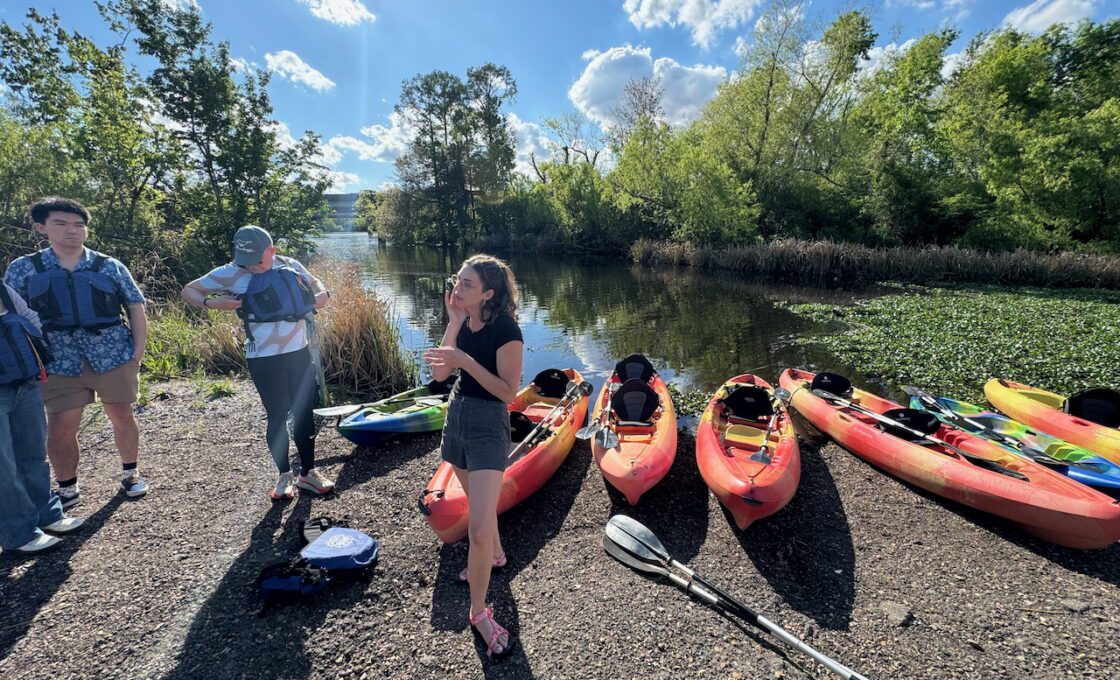
The bridge itself is a marvel: the Manchac Swamp Bridge, stretching over 23 miles, is one of the longest bridges over water in the world. Built in the 1970s and part of I-55, it rises on massive concrete pilings driven deep into the soft, marshy earth—each one up to 250 feet long.
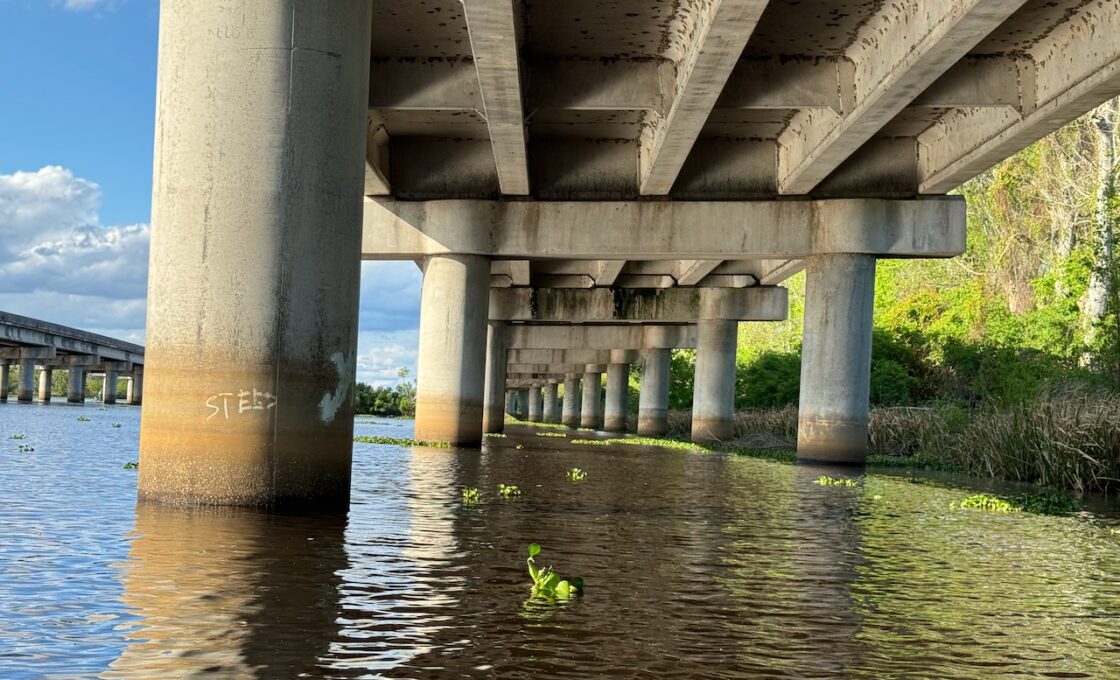
Up Close with the Wild Side
A few weeks earlier, we took the Honey Island Swamp tour, which was fantastic.
You’re in a boat with about 20 others, gliding deep into the cypress swamp. Along the way, you spot all kinds of wildlife and terrain—raccoons, alligators, and dense thickets of swamp flora. But kayaking offers an entirely different experience.
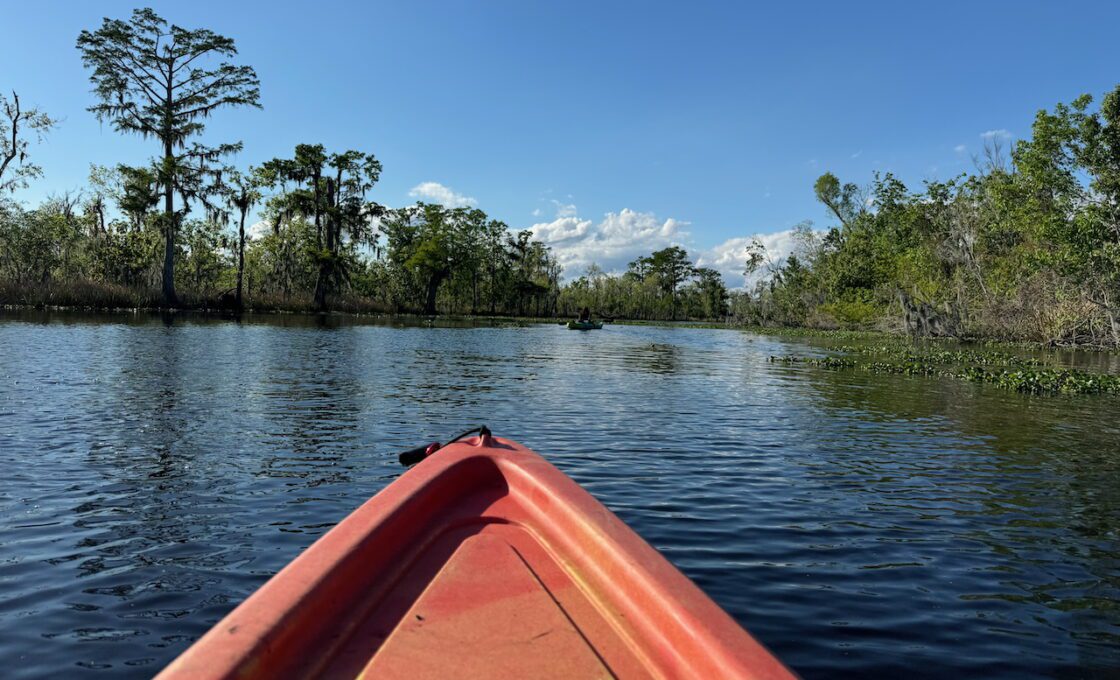

Unlike a boat tour, kayaking puts you right on the water, with no railing or deck between you and the creatures that call this place home. That includes alligators, who tend to dip silently beneath the surface the moment they sense movement nearby. It’s unnerving and fascinating all at once—watching them disappear into the murky depths, never quite sure where they’ll resurface.
We spotted three during our paddle, but many others in the group didn’t see them at all, likely because we were out in front. Staying ahead of the pack gave us a quieter, less disturbed stretch of swamp, which made all the difference. If you’re hoping to catch a glimpse of wildlife, I definitely recommend paddling near the front—once the group comes through, most animals have already slipped away into the shadows.
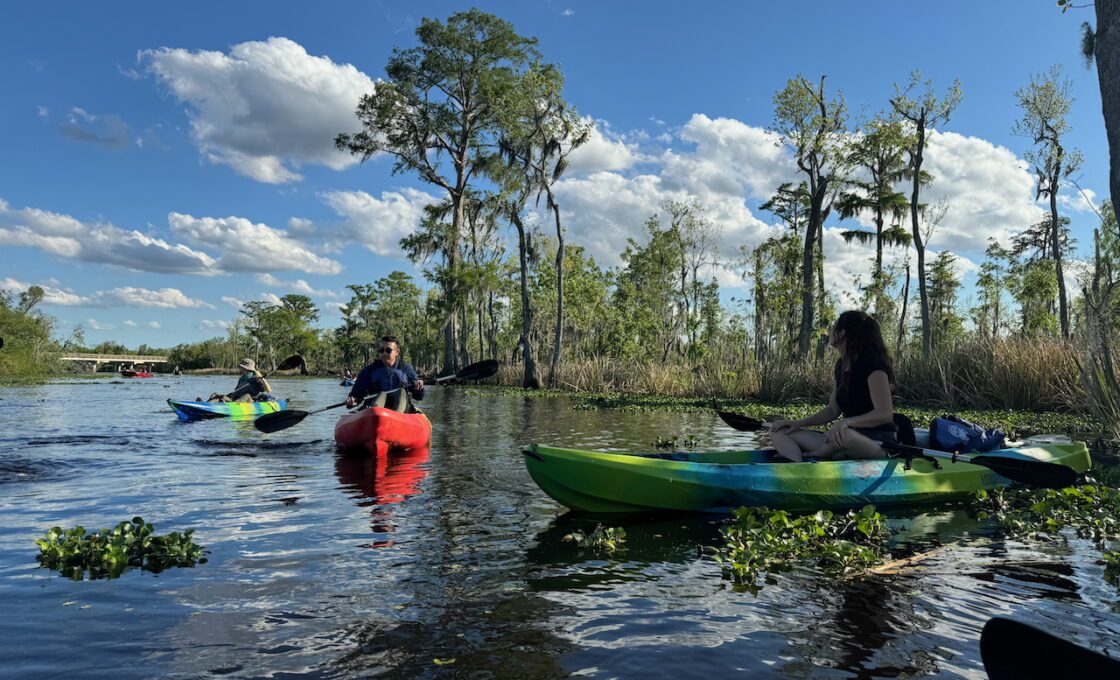
We also spotted a pair of owls perched high in the cypress branches, nearly blending into the Spanish moss. I believe they were barred owls, common in the Manchac Swamp and known for their haunting “Who cooks for you?” call that echoes through the trees.

We heard their distinctive call before we saw them, and when we looked up, there they were—still and alert in the fading light. Seeing them up close like that, without the noise of a motor or the distraction of a crowd, was one of the most unexpectedly magical parts of the whole trip.
It was the spiders that really tested me though.
Some of these spiders literally skate across the water’s surface, and a few decided to hop into our kayaks. When that happens, you’re kind of stuck—fidgeting too much risks tipping the boat, so you just have to coexist with your new paddle buddy.

We also learned a ton about the flora. One of the most noticeable plants was duckweed—tiny green floating plants that completely coated the water’s surface like a living carpet. Then there were the larger floating plants, which turned out to be water hyacinths.
These had bulbous air sacs that helped them stay afloat and drift through the swamp. Our tour guide did a fantastic job pointing these out and explaining how they affect the local ecosystem, from helping with water filtration to becoming invasive if not managed. It added a whole new layer of appreciation for the environment we were paddling through.

Kayaking, of course, is a bit of a workout—so you’ll want to come prepared. Especially when you get caught in some of the thicker vegetation and have to paddle your way through it. I found that the best strategy was to build up some momentum before hitting those patches; your kayak can basically just plow through, making it a lot easier.
That said, I’d still consider this a beginner-friendly kayaking experience. This was only my second time ever kayaking, and we didn’t run into any real issues.

That Otherworldly Feeling
After a couple of hours in, the sun began to drop below the trees.

One thing I noticed throughout the tour was how the temperature would suddenly drop in strange, inexplicable bursts—cold spots that didn’t make sense in the otherwise warm, humid air.
A lot of people would call that a sign of paranormal activity, and I’ll admit, it was in the back of my mind. But I also figured there had to be some kind of weird microclimate at play… or at least that’s what I told myself.
Another eerie part of kayaking through the swamp is the unfamiliar sounds. When you’re that low to the water, every splash, knock, or rustle feels amplified—and you’re never quite sure what it is. Sometimes it’s probably just vegetation brushing against the kayak… but you also can’t help but wonder if it’s an alligator.
There’s also this subtle, uneasy feeling of being watched—maybe by wildlife, maybe by something else. Either way, it adds a whole new level to the experience.
Would I Recommend It?
Absolutely—especially if you’re into haunted places or unique ecosystems. Manchac Swamp is rich in both. The kayaking experience brings you intimately close to the wildlife, the folklore, and the eerie stillness that makes this swamp so legendary.
Just… maybe watch out for the spiders. And keep an ear out for Julia.
Daniel Gillaspia is the Founder of UponArriving.com and the credit card app, WalletFlo. He is a former attorney turned travel expert covering destinations along with TSA, airline, and hotel policies. Since 2014, his content has been featured in publications such as National Geographic, Smithsonian Magazine, and CNBC. Read my bio.

